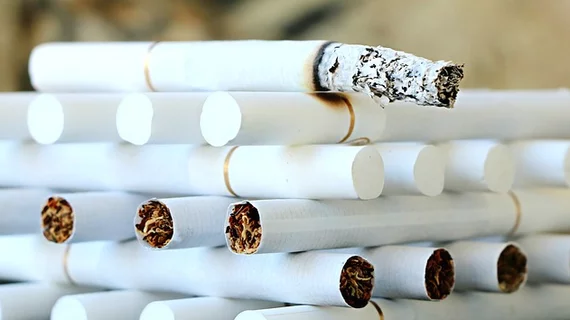Despite lung cancer claiming 150,000 lives a year in the U.S., only two percent of heavy smokers (those who smoke a pack a day, or equivalent) in the U.S. currently get lung cancer screenings, according to a May 17 press release from the American Society of Clinical Oncology (ASCO).
The research will be presented by lead author Danh Pham, MD, a medical oncologist at the University of Louisville’s cancer center in Kentucky, at the ASCO's annual cancer meeting next month in Chicago.
"Lung cancer screening rates are much lower than screening rates for breast and colorectal cancers, which is unfortunate," said Pham, in a prepared statement. "It is unclear if the screening deficit is due to low provider referral or perhaps patient psychological barriers from fear of diagnosis. Lung cancer is unique in that there may be stigma associated with screening, as some smokers think that if cancer is detected, it would confirm they've made a bad lifestyle choice."
Although national organizations such as the U.S. Preventive Services Task Force (USPSTF) have urged heavy smokers aged 55 years or older to get screened, neither that effort nor Medicare's full coverage of lung screening exams has made an impact.
"It’s still truly abysmal,” said Pham, in an interview with Bloomberg. “We would like to make this a true call to action, whether it’s for more education or more research, to know why this disparity exists for lung cancer.”
According to the press release, researchers gathered data from the 2016 American College of Radiology's Lung Cancer Screening Registry on people who received low-dose computed tomography (LDCT) at 1,800 accredited screening sites in four U.S. census regions across the country—the Northeast, South, Midwest and West.
This data was then compared to 2015 National Health Interview Survey estimates of eligible smokers who quality for screening based on USPSTF recommendations.
Researchers found that a total of 1,796 accredited lung screening centers could have screened a total of 7,612,965 eligible and current heavy smokers. But, only 141,260, or 2 percent, actually received LDCT screenings.
As for specific regions in the U.S., the West had the lowest screening rate at one percent and the lowest number of accredited screening sites (232). The Northeast had the highest screening rate at 3.5 percent.
Pham additionally told Bloomberg that identifying the presence of lung cancer by undergoing screening before the cancerous cells spread can reduce overall mortality risk by 20 percent.
“If you screened the entire population of the U.S. who fit the criteria for having smoked enough and being the appropriate age, which is about eight million people, you could save about 12,000 lives a year,” Pham said.

